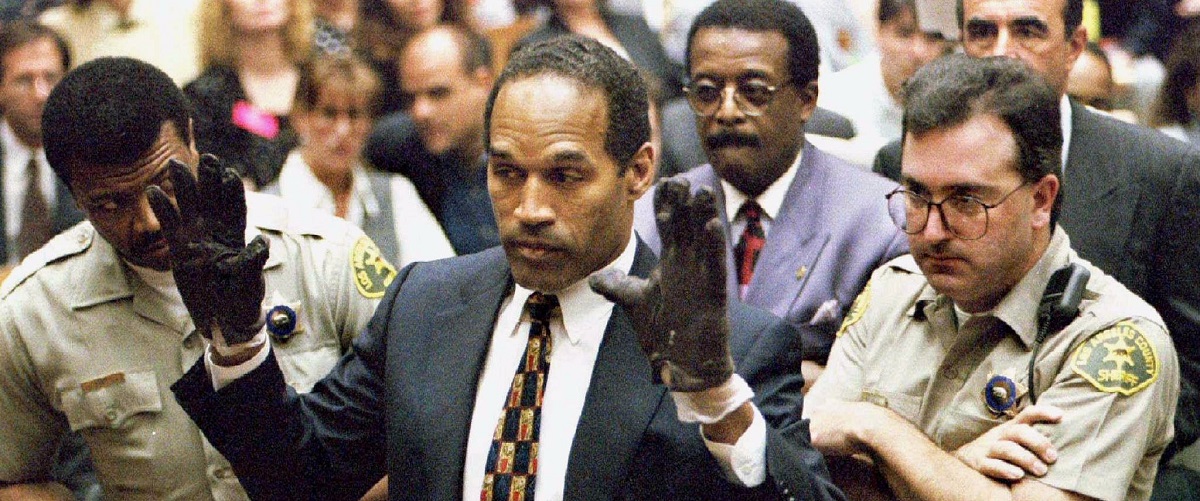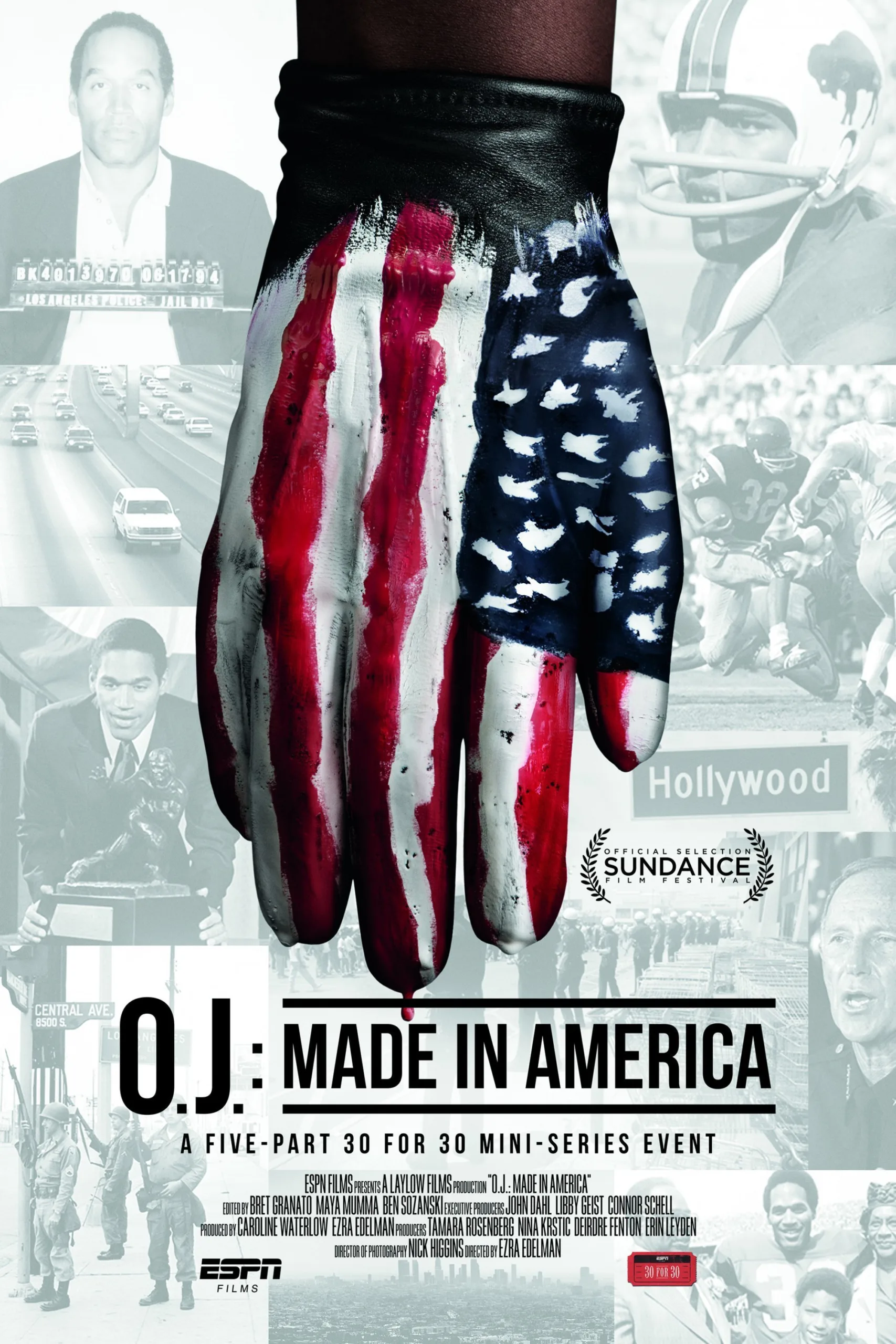“We talk about OJ as though the story is OJ. The story is OJ AND US.” —Celia Farber
Even in this era of “Peak TV,” it’s rare to see something as essential and momentous as ESPN’s “OJ: Made in America,” which played film festivals earlier this year and starts this Saturday, June 11th, and runs all of next week under the network’s “30 For 30” brand. Ezra Edelman’s stunningly ambitious, eight-hour documentary is a masterpiece, a refined piece of investigative journalism that places the subject it illuminates into the broader context of the end of the 20th century. You may think you know everything about The Trial of the Century, especially if you watched FX’s excellent “The People vs. OJ Simpson: American Crime Story,” but “OJ: Made in America” not only fills in details about the case but offers background and commentary that you’ve never heard before. It is an examination of race, domestic abuse, celebrity, civil rights, the LAPD, the legal process and murder over the last fifty years, using the OJ Simpson story as a way to refract society. Its length may seem daunting, but I would have watched it for another eight hours and will almost certainly watch it again before the summer is over. It’s that good.
As broadcast, “OJ: Made in America” is split up into five parts. The first part plays like a relatively straightforward “30 For 30,” the ESPN brand that has delivered fantastic sports documentary filmmaking. It focuses on the rise of OJ Simpson, becoming a household name at USC, where he won the Heisman Trophy in 1968. Edelman very carefully places the rise of Simpson against the backdrop of what was happening to the other black sports figures at the time. He includes footage of Muhammad Ali refusing to go to Vietnam and Tommie Smith and John Carlos raising their fists in protest at the 1968 Olympics. OJ was a “safe” black athlete, and even intercuts footage of RFK announcing the death of Martin Luther King with Simpson joining Bob Hope on stage as the host congratulates USC on not having “had a riot, a demonstration, or even a sit-in.” While black people were trying to change the world, OJ Simpson went in another direction, and he very verbally and consciously did so, using that acceptance to become the first black spokesman for several companies. As someone says, “OJ Simpson was the counter-revolutionary athlete.” The key here is that OJ Simpson was already writing a character, responding more to how people saw him than anything else. If “OJ: Made in America” was just part one, it would be a fascinating, must-see examination of how celebrity and race worked together in the late ‘60s and ‘70s.
The second part of “OJ: Made in America” chronicles the instantly-tumultuous relationship between OJ and Nicole Brown. A friend says that her pants were ripped after her first date with OJ and that she said that “he got a little rough.” At this point, Edelman pivots to a story of how celebrity can let people get away with domestic abuse, while also focusing on the state of race relations in Los Angeles in the ‘80s and ‘90s. As the relationship between the Los Angeles Police Department and minorities in L.A. continued to heat up, Rodney King became the international example of the violence cops were inflicting on black people, and, eventually and more importantly, injustice. If you’re wondering how or why Rodney King’s beating plays a role in “OJ: Made in America,” know that one of the jurors in Simpson’s trial later states that she let OJ go as revenge for Rodney King. And she’s convinced others did as well. Racist cops—like those that beat Rodney King and Mark Fuhrman, who the defense argued framed OJ Simpson—needed to know those days were over. What’s so incredible about “OJ: Made in America” is how Edelman and his team basically define the foundation of what would come in the trial. They don’t jump into the “salacious details.” Nothing as major as the story of OJ Simpson happens in a vacuum. How did OJ get there? How did Nicole get there? How did Mark Fuhrman, Chris Darden and Johnnie Cochran get there? How did we all get there?
Of course, the third and fourth part of “OJ: Made in America” is devoted to the trial, and they do an incredible job of distilling it to essential beats, with notable contributions by Marcia Clark, Gil Garcetti, two jurors and several witnesses, including some of OJ Simpson’s friends, all of whom either at that point or today admit that he did it. The details of the entire piece are what elevate it—eyewitness accounts of the Bronco chase from the cops who essentially accompanied a man with a murder charge pending to his home (think about that in terms of race and celebrity and ask yourself if they wouldn’t have just shot out the tires of every other black man in L.A.). The cops that day went into OJ’s house and saw only pictures of him on the walls. No Nicole. No kids. So, they knew they could appeal to his ego to stop him from killing himself in that Bronco in his own driveway, where he had a gun under his chin.
These kind of “you are there” details are riveting, but that’s not meant to imply that this is merely a compendium of little-known facts. What really separates “OJ: Made in America,” other than its investigative spirit, is the brilliant connections Edelman and his team make through editing. We hear a fascinating story about friends trying to play a prank on a young OJ Simpson and Al “AC” Cowlings in which they pulled a starter pistol and AC jumped to protect his best friend. Of course, cut to the Bronco chase, in which AC could have been the last man to see OJ alive if Simpson had done what he intended at several points that day.
The attention to detail and brilliant documentary construction carries over to the case as well, where mistakes were made from the very beginning, everywhere but the defense. Edelman paints a portrait of a judge with little control (for no logical reason, he let them walk the jury through Rockingham, where Simpson’s team had replaced photos of Juice with his white friends with only black people and African art) and a prosecution team always at least a few steps behind not just their opponents but the world. They didn’t comprehend the “bigger picture” of fame and race. Here’s just one of the breathtaking stats in terms of the power of celebrity: 75% of the jurors in the questioning period thought that OJ Simpson was unlikely to do it because he had played football at USC. Marcia Clark drastically overestimated her likability with black women and ended up with eight on her jury. And OJ Simpson wasn’t your typical defendant. He knew exactly how to play things. He was a part of his defense team. He even knew to stop taking his arthritis medicine—which would swell up his hands—two weeks before the testimony about the gloves, just in case Chris Darden would ask him to try them on. And we all know what happened there.
An hour into part four, there’s a detailed recounting of exactly what happened the night that Nicole Brown and Ron Goldman died, with brutal crime scene photos. The horror and violence of that night is jawdropping and as terrifying as any horror movie. The doc gets graphic, and I started to get emotional not just because of the impact of the crime but because I realized I didn’t know these details before. I interned at a news station during the original case and I was as enraptured with the story as anyone but the actual horror of the crime was distracted by conspiracy theories and the blinding light of fame.
The final part of “OJ: Made in America” is the only one in which I can find the slightest flaw in that I wish it was a bit longer. After being acquitted, OJ Simpson lost his exalted status. He was no longer allowed in the country clubs at which he was formerly the only black member. He was yelled at everywhere he went, essentially descended into a life of drugs and violence, which would result in his conviction for armed robbery. But he was always obsessed with his image. There’s an incredible scene in which OJ is taking down the flag at Rockingham, getting emotional and then pushing the camera away as if a paparazzi had snuck onto the grounds. It was staged. Any footage of OJ at the time could be sold to TMZ for a pretty penny and Simpson was making money with a buddy, even as his world was crashing around him.
Whether he was running for a record, leaping through an airport for Hertz, making sure Nicole knew that she was his property or getting angry enough to kill, it was always about OJ and only OJ. To understand OJ, we have to understand how much of his life was influenced by what he showed us in the world of celebrity and how we responded to it as a society. “OJ: Made in America” should be a conversation-starter, a way to discuss what happened in the ‘80s and ‘90s in terms of race and celebrity and what it says about today. OJ’s story may be over. Ours is not.




















